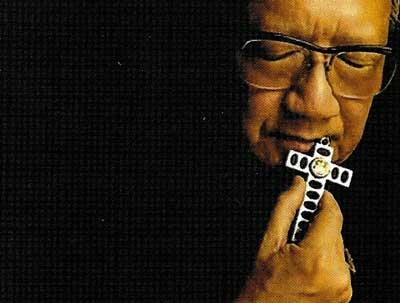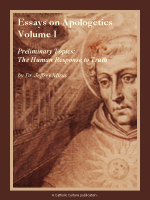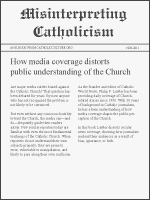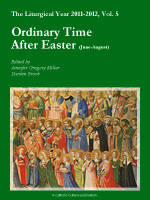THE EUCHARIST, THE LIFE OF CHRIST IN OUR LIVES Your Eminences, Your Excellencies, Reverend Fathers, Brothers and Sisters, Dear Friends,
I feel immensely privileged and honoured by his Eminence Cardinal Ouellet's invitation to be here at this 49th International Eucharistic Congress, and to have been given the chance to share with you my late brother Cardinal Nguyen Van Thuan's message of faith and devotion to the Eucharistic Jesus, as well as the miraculous transformations brought forth by the Eucharist in the darkness of prison.
To better appreciate and understand his deep faith and commitment to the Blessed Sacrament, I'd like to start with a brief overview of some of the important milestones in his life. Francis Xavier Nguyen Van Thuan was ordained a priest in 1953, and became bishop in 1967, at the age of 39. Nine years later, just before the communist regime took over South Vietnam in 1975, the Holy Father Pope Paul VI appointed him Coadjutor of Saigon, by that time renamed Ho Chi Minh City. Francis' new appointment was rejected by the new government and on August 15, 1975, the Feast of the Assumption, he was arrested and spent the next 13 years in prison, 9 of which were in solitary confinement.
Armed with a strong faith and his constant union with Jesus in the Eucharist, he turned those years of incarceration into a journey to holiness. He brought the message of Christ into the darkness of life in captivity. A free man again at the age of 61, he was first appointed Vice-President in 1994, then President of the Pontifical Council for Justice and Peace in 1998. He was later diagnosed with a rare form of terminal stomach cancer, but once again, as on so many previous occasions, and to the end, he endured and accepted his illness in union with Jesus on the Cross for the Unity in the Church.
On September 16, 2007, the 5th anniversary of his death, the Holy Father Pope Benedict XVI officially opened his cause for beatification.
The Eucharist, Life for the World
Through his writings, and most particularly through his correspondence from prison, one clear fact emerges: Francis Xavier's life was firmly rooted in an extraordinary union with the Living God through the Eucharist, his only strength. It was also to him the most beautiful prayer, and the best way to give thanks and sing the Glory to God.
Our mother often reminded us of the time when her eldest sister was dying of tuberculosis in the city of Hue, in Vietnam. Back then, tuberculosis was considered a highly dangerous and contagious disease for which there was no cure, hence the difficulty of finding altar boys to help the parish priest administer Holy Communion to my aunt. Nevertheless, Francis offered to accompany the frail old priest on his regular visits to my aunt, on foot, every day after school, until my aunt's death. When asked about it, he explained his great devotion to my aunt with a quote from Saint John: "Unless you eat the flesh of the Son of Man and drink His blood, you do not have the Life within you."
This unshakable faith in the Eucharist was always the guiding force in his life, the strength and food for his long journey in captivity. [As my parents had initially feared, Francis would eventually contract the disease and spend a long time in a hospital for infectious diseases. Successive tests reconfirmed his advanced tuberculosis, necessitating lung surgery that, if successful, would, at best, leave him permanently incapacitated. However, he survived miraculously, and recovered fully.]
During an interview with the media after his release, he was asked what his secret strength had been that kept him alive and sane. His answer was always, "The Eucharist." He explained how when he was arrested, he had to leave immediately, empty-handed. The following day he was allowed to write to his faithful to ask for some personal effects. He wrote: "Please send me a little wine as medicine for my stomach pain." They understood right away. A few days later, the guards handed him a small container addressed to him, and labeled "Medicine for stomach aliments." He also received another small container containing small pieces of Holy Host.
With three drops of wine and a drop of water in the palm of his hand, he would celebrate Mass. "Each time I celebrated Mass, I had the opportunity to extend my hands and nail myself to the cross with Jesus, to drink with Him the bitter chalice" (Testimony of Hope).
And those were the most beautiful Masses of his life.
In Testimony of Hope he continued: In the re-education camp, we were divided into groups of 50 prisoners. We slept on a common bed, and everyone had the right to 50 cm of space. We managed to make sure there were Catholics around me. At 9:30 pm, we had to turn off the light. It was then that I would bend over the bed to celebrate Mass by heart, and I distributed communion by passing my hand under the mosquito net. We even made little bags with the aluminum foil from cigarette packs to preserve the Holy Host and take it to others. The Eucharistic Jesus was always present in my shirt pocket.
He always ended his clandestine letters to our parents with these words: Dear Mum and Dad, do not burden your hearts with sadness. I live each day united with the Universal Church and Jesus' sacrifice. Pray that I have the courage and the strength to always remain faithful to the Church and the Gospel, and to do God's will.
The Eucharist and Missionary Activity
The Eucharist is the heart and soul of missionary activity. Indeed it was during those years of silence and solitude, cut off from all pastoral duties, but intimately united to the Eucharist that Francis understood with his whole being that it is only God, and not God's work, that should be the centre of our lives. That understanding opened the door to the Holy Spirit to transform those years of severe restrictions into the most active and fruitful evangelization periods of his life.
ln his book Five Loaves and Two Fish, Francis recounted the special period of his life which he considered as his period of major spiritual growth. Many times I was tempted, tormented by the fact that I was only 48 years old, in the prime of my life. I had acquired a great deal of pastoral experience, and there I was, isolated, inactive, separated from my people. One night I heard a voice encouraging me from the depth of my heart: 'Why do you torment yourself so? You must distinguish between God and the work of God. You must choose God alone, and not his works.
When the communists threw him into the old of a cargo ship headed to Haiphong, 1700 m north, he suddenly found himself among some 1500 desperate, starving prisoners. He sensed their anger, their despair and desire for revenge, and he started to share in their human suffering; but with the inner voice immediately urging him to choose God, and not the works of God, he quickly realized that, in that captive company, he had just been handed a cathedral full of faithful to minister to. He decided to be an affirmation of God's presence in the midst of that cargo of human misery. He sustained his fellow prisoners during the 10-day trip, and managed to provide comfort for them.
He silently celebrated the Feast of Saint Francis Xavier, his patron Saint, who had also travelled north over the same channels of the South China Seas. By the time the cargo ship of prisoners reached Haiphong, Thuan realized he was already following Jesus to the roots of evangelization. It was like going with Him to die "extra muros", i.e., outside the walls, outside the sacred walls (Five Loaves and Two Fish).
Van Thuan described how he practised his ministry in the Vinh Quang Prison Camp: At night, the prisoners would take turns for adoration. With His silent presence, the Eucharistic Jesus helped us in unimaginable ways. Many Christians returned to a fervent faith life, and their quiet display of service and love had an even greater impact on other prisoners. Even Buddhists and other non-Christians joined in the faith. The strength of Jesus' loving presence was irresistible. The darkness of prison became a paschal light, and the seed germinated in the ground during the storm. The prison was transformed into a school of catechesis. Catholics baptised fellow prisoners and became godparents to their companions.
Van Thuan never stopped praising the providence of God in allowing almost 300 to 400 priests to be held in different prisons throughout Vietnam during the period from 1975 to the late 1990s: their presence there opened up a period of truly meaningful inter-religious dialogue and fostered deep friendships among hundreds of thousands of prisoners belonging to different faiths. On one occasion, a group of prisoners came running to ask for his help: one inmate in total despair was trying to hang himself with an electric wire.
Van Thuan knelt beside the man with prayers and encouraging words. Other inmates, moved by this strong display of faith, joined Thuan in prayers, and finally the man broke down, sobbing, and surrendered to God. Years later, Thuan and the once-suicidal inmate met again in California, and together, they would rekindle the memory of that blessed day when the presence of a Eucharistic Jesus made healing possible.
During his 9 years in solitary, he celebrated Mass everyday around 3 pm, the hour of Jesus' agony and death on the cross. He was alone, so he could sing the Mass as he wished in Latin, French, or Vietnamese. He always carried in his shirt pocket the little container holding the Blessed Sacrament. He would repeat "Jesus, You in me and I in You" adoring the Father. Van Thuan reminds us, throughout his writing, that it is not enough to celebrate the Eucharist strictly according to the liturgical rites.
He points out to all of us that Christ offered his sacrifice with immense fervour, as in the hour of His passion and crucifixion, when He obeyed the Father; and this, even to the point of His humiliating death on the cross to bring back to the Father a redeemed humanity and a purified creation. ln prison with the Eucharistic Jesus in their midst, Christian and non-Christian prisoners slowly received the grace to understand that each present moment of their lives in the most inhuman conditions can be united with the supreme sacrifice of Jesus and lifted up as an act of solemn adoration to God the Father. Together each day, Thuan would remind himself and encouraged everyone to pray: Lord, grant that we may offer the Eucharistic sacrifice with love, that we accept to carry the cross, and to be nailed to it to proclaim Your glory, to serve our brothers and sisters.
Five months before his last major surgery, he flew to Sydney, Australia, to celebrate our mother's 100th birthday. Each day with our mother and the rest of the family he celebrated the Eucharist in the livingroom facing the beautiful harbour. Everyone present during those mornings remained deeply touched by the reverence, the serenity, and the perfect harmony of that moment of adoration after communion. All the worries, all the sufferings and joy, all the uncertainties were lifted up to God as a total Yes to His Divine will.
In Casa di Curia hospital where he died, we understood more clearly what he meant when he wrote, in Testimony of Hope: I dream of the Holy See, with all its organizations as a great Host, one bread offered in spiritual sacrifice in the heart of the Church, and all of us as grains of wheat, accepting to be ground by the needs of communion in order to form one body, fully united and fully grown as a sign of hope for humanity. We understood then that as he had lived his years of incarceration, he also lived his illness and accepted his death as part of that Eucharistic Unity.
I would like to end my reflections with those tender thoughts recorded on the Feast of the Holy Rosary, October 7, 1976, in Phu-Khanh prison, during his solitary confinement: I am happy here, in this cell, where white mushrooms are growing on my sleeping mat, because You are here with me, because You want me to live here with You. I have spoken much in my lifetime: now I speak no more. It's Your turn to speak to me, Jesus; I am listening to You.
Every time I read this, I can't help imagining my brother, sitting in his dark cell, facing complete emptiness, but gently smiling as he always did, even during his last days, and holding tightly and lovingly on to his shirt pocket where the Lord of Heaven resided.
May this former prisoner who experienced Heaven's harmony, love, and life to the fullest in the desolation of his prison cell continue to guide us so that we can be like the disciples of Emmaus who called out, "Lord, remain with us and feed us with Your body." From the bottom of my heart, thank you for allowing me to travel this journey of Faith with you.

_____________________________________________________________________________________________________
"The protection of human life [at all its stages] is the "rock solid and inviolable" foundation upon which all other human rights are based." - Benedict XVI











 British-born professor Dougill, who teaches British studies in Kyoto, seems to embody the very culture clash that intrigues him. In this book, he peels back layers of Japanese culture as he explores the history of the Kakure Kirishitan (Hidden Christians). From the arrival of the first Portuguese missionaries to Japan in 1549 through conversions and persecution, Dougill shows how the imported religion was "filtered through a Japanese consciousness." Revealing an early culture clash so relevant to our contemporary global society, he ponders how strange and even offensive European Christianity must have seemed to a country that had no context for the religion or even the manner of dress. As Buddhist and Shinto culture, together with trade and military tactics, became intertwined with Christian conversions, the Hidden Christian population became heterodox, tortured, and marginalized. Readers are immersed in Dougill's travel adventures as he visits historical sites of the Kirishitan. And even those who stumble over the Japanese terminology will understand the importance of a book detailing a dwindling subculture now fading into history. (Mar.)
British-born professor Dougill, who teaches British studies in Kyoto, seems to embody the very culture clash that intrigues him. In this book, he peels back layers of Japanese culture as he explores the history of the Kakure Kirishitan (Hidden Christians). From the arrival of the first Portuguese missionaries to Japan in 1549 through conversions and persecution, Dougill shows how the imported religion was "filtered through a Japanese consciousness." Revealing an early culture clash so relevant to our contemporary global society, he ponders how strange and even offensive European Christianity must have seemed to a country that had no context for the religion or even the manner of dress. As Buddhist and Shinto culture, together with trade and military tactics, became intertwined with Christian conversions, the Hidden Christian population became heterodox, tortured, and marginalized. Readers are immersed in Dougill's travel adventures as he visits historical sites of the Kirishitan. And even those who stumble over the Japanese terminology will understand the importance of a book detailing a dwindling subculture now fading into history. (Mar.)